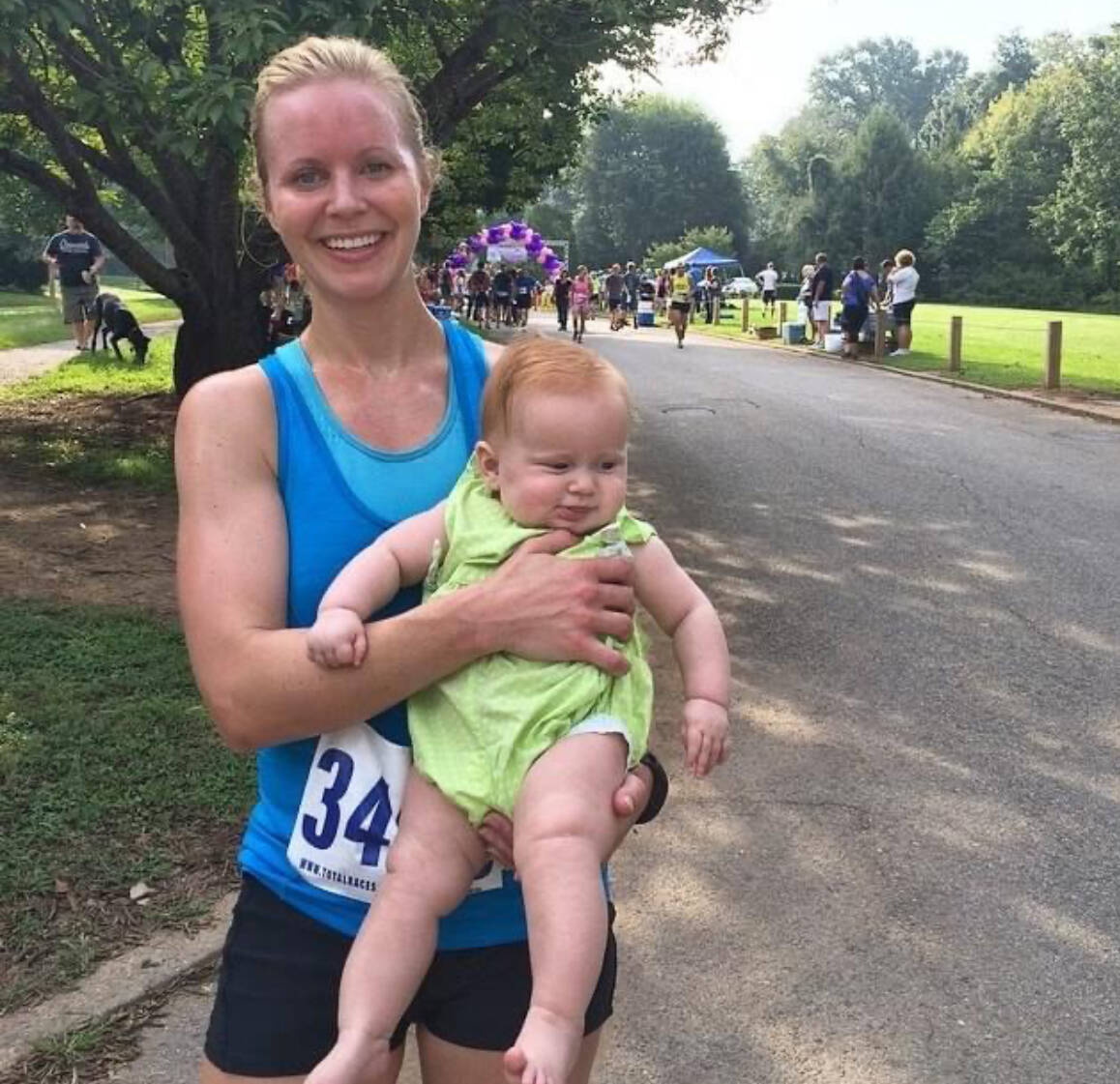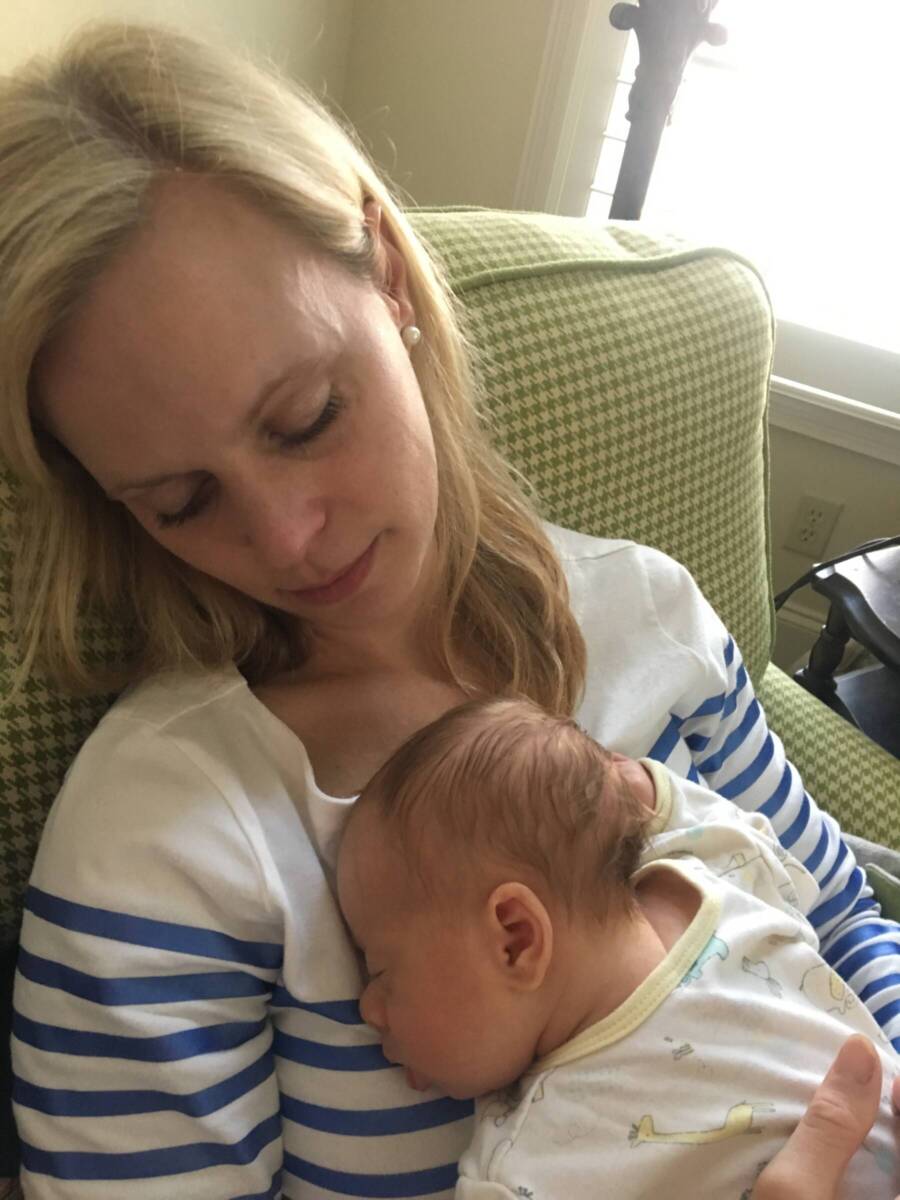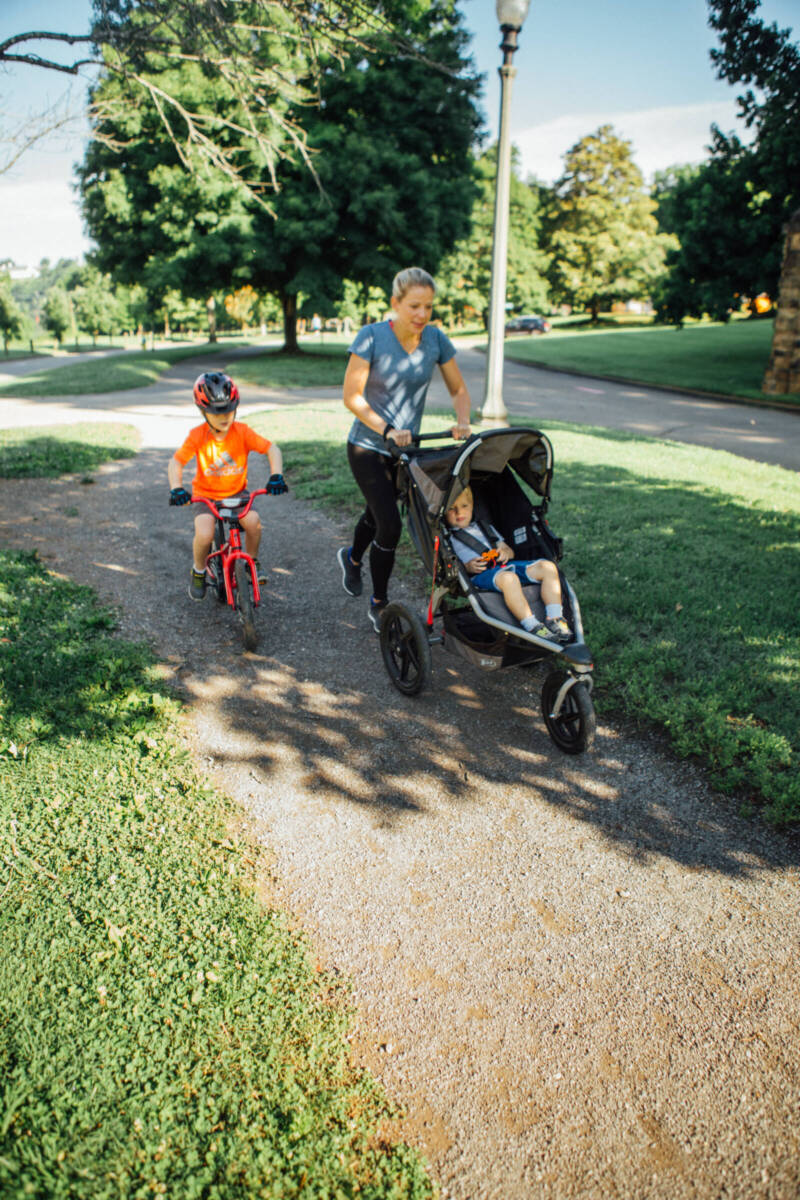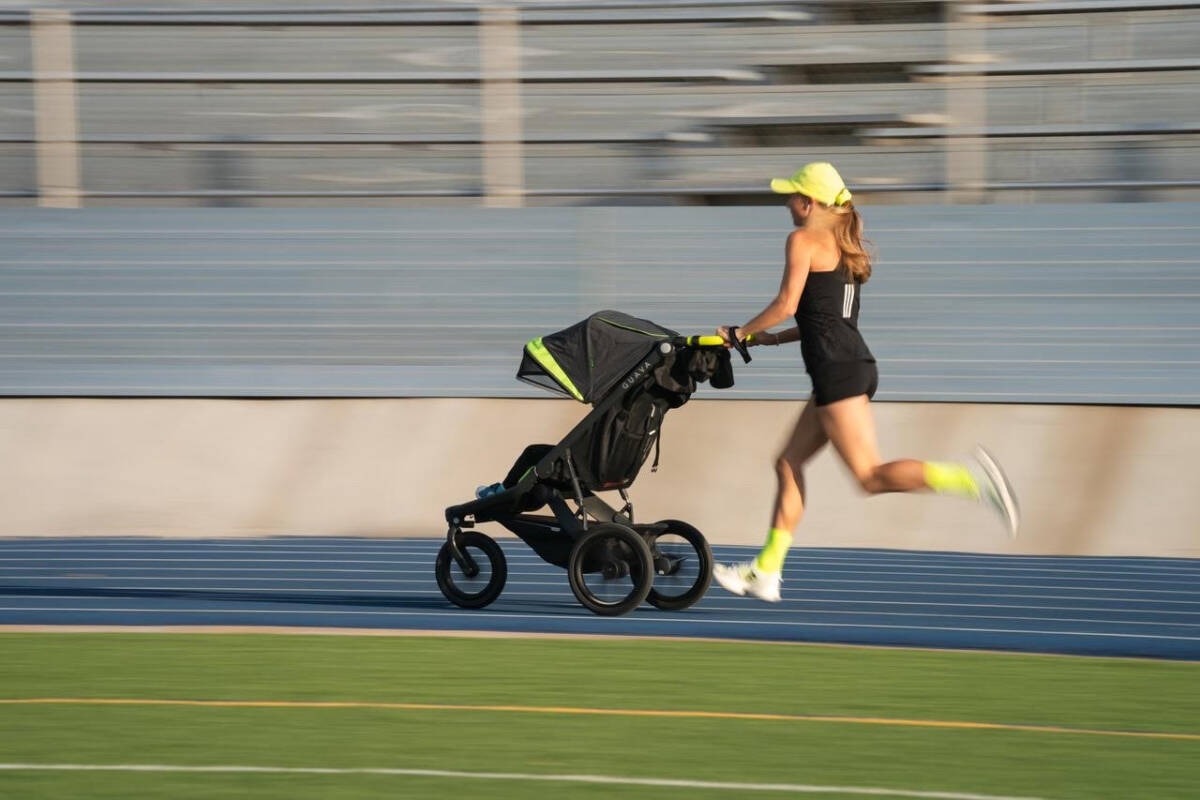How to Safely Return to Running After Having a Baby
Though many mother runners can be antsy to get back to their pre-pregnancy selves, it is important to give your body adequate time to recover, heal, and let your body rest after such a monumental activity as growing and birthing a baby.

Learn from my mistakes. When I was returning to running after having a baby, I did not know anything about the pelvic floor and returned at 6 weeks before my body was ready. The result has been a long battle with running injuries. It took me several years to finally see a pelvic floor physical therapist and learn how a birth injury impacted my running form.
Table of contents
- Disclaimer
- Can you safely return to running postpartum?
- When can I start running postpartum?
- How to Start Running After Having a Baby
- Key Tips for Safely Running After Childbirth
- Summary
- How to strengthen your core and pelvic floor for running postpartum
Lots has been learned even in just the past 7 years. It was previously believed that once a woman had stopped bleeding, she could resume running. But whether you birthed vaginally or with a c-section, many musculoskeletal changes have happened in your body that are worth giving your attention to before you get back out pounding the pavement (source). Though previous wisdom – and many OBGYNs – recommend getting back to exercise after 6 weeks, it is more nuanced and personalized than that.
Read on to learn all about considerations to make when returning to running after having a baby, how to know when you are ready to get back to run, and how to make the transition safely and healthily.
Disclaimer
This guide was written based on evidence-based studies, current scientific research, consultation with pelvic floor experts and physical therapists, and my experience as a VDOT-O2 certified running coach and a mother runner of two kids. I am not a doctor, so consult yours before returning to running after having a baby.
Can you safely return to running postpartum?
Yes, it is safe to return to running after giving birth. But, you should always consult your OBGYN, doctor, or pelvic floor therapist before doing so and should begin with low-impact exercise before higher-impact exercise such as running.
For postpartum mothers who had pregnancies without complications and vaginal deliveries, the general recommendations are to return to low-impact exercise as soon as a few days after delivery (source). C-section recovery can take longer and varies from person to person, so always consult your physician before returning to even low-impact exercise. Recovery time before returning to low-impact exercise may also be increased if you had a complicated vaginal delivery or a complicated pregnancy.
These recommendations to return to exercise, however, are for light low-impact exercise such as walking and for core rehabilitation exercises. The turn to high-impact exercises such as running is contingent on many other factors, so the process of returning to that takes much longer.
When can I start running postpartum?
Originally, general recommendations have been to return to running after your OBGYN or midwife gave clearance to do so, often around 6 weeks. But there was variance in these recommendations from professional to professional since not much research was conducted on the topic (source).
In 2019, UK researcher Tom Goom and his colleagues published a study backing a recommendation that postpartum women do not return to running until at least 12 weeks after giving birth (source). This is double the previous recommendation of 6 weeks. Goom’s research reveals that women’s bodies need more time to heal before safely performing a high-impact exercise such as running.
Many factors are at play in the postpartum weeks and the transition to high-impact activities, so the exact amount of time needed to recover can depend on pelvic floor health, core strength and core health, muscle strength, ability to complete load bearing activities, scar tissue healing, and more (source). Seeing a pelvic floor physical therapiss can help you assess your readiness to run postpartum.
If you do not have access to a local pelvic floor specialist, there are many at-home and remote options available. Dr. Carrie Pagliano, a physical therapist and pelvic floor specialist, has a free at-home 10-step screen based on the new UK guidelines that help you self-assess whether you’re ready to return to running postpartum.
How to Start Running After Having a Baby
Ok, so how do you return to running after childbirth? The key to returning to running after giving birth is to take it slow. Take the time to let your body recover, rebuild the core and pelvic floor muscles, and walk before you run.
General guidelines for this return to running period are:
- Walk before running on flat surfaces. Aim to be able to walk comfortably for 30 minutes at a time.
- Then introduce uneven surfaces. When that feels comfortable, progress to walking hills.
- When that feels comfortable, begin a walk/run program like my free postpartum running plan. This should not start before 6 weeks postpartum.
- Aim to introduce a new variable or increase the distance every 2-3 weeks to allow for the soft tissue to become stronger from the new stimulus.
- You can increase distance 10-30% every 3 weeks, just as you would when rehabbing a running injury.
- Continue with pelvic floor, core, and strength exercises, as recommended by a pelvic floor therapist or strength routine.
Key Tips for Safely Running After Childbirth
Support your middle. ReCORE’s Post-Natal FITSplint supports your abdominal muscles without restricting movement or breathing. It keeps you from getting injured and allows you to safely work on strengthening stretched-out muscles. Get my list of the best belly bands here.
Strengthen your core. Ideally, you will be working with a pelvic floor physical therapist to help re-strengthen your core and pelvic floor but exercises such as the below will help start the process:
- bird dogs
- planks
- side planks
- bicycles
- split tabletop
- bridges
Focus on your breath. Diaphragmatic breathing is another key way to retrain your core and pelvic floor. Couple your core exercises with a couple minutes of this deep breathing, or as directed by your pelvic floor physical therapist. Picture your rib cage as an umbrella, opening with each breath:
- Lie on your back on a flat surface or in bed, with your knees bent and your head supported. You can use a pillow under your knees to support your legs. Place one hand on your upper chest and the other just below your rib cage.
- Breathe in slowly through your nose so that your stomach moves out against your hand. The hand on your chest should remain as still as possible.
- Tighten your stomach muscles, letting them fall inward as you exhale through pursed lips. The hand on your upper chest must remain as still as possible.
- Do this exercise for 5-10 minutes about 3-4 times per day.
Be aware of your pelvic tilt. Many pregnant women have an anterior pelvic tilt which occurs when your pelvis is tipped forward and downward. This can lead to running injuries. Aim to have a neutral pelvis that isn’t tipped forward or back. Have your pelvic floor PT check your alignment.
Make sure the shoe fits. Ensure your running shoes fit your postpartum feet, which may have enlarged. If your shoes still fit, make sure your shoes don’t have too many miles on them and provide plenty of support. If the soles are worn around the sides and on the treads, it’s time to get new ones.
Get the right bra. Chances are your pre-pregnancy sports bra isn’t going to fit your postpartum chest. You need more support and room. Get my complete list of the best nursing sports bras.
Change out of your bra after running. Leaving your bra on too long could lead to blockage or worse. The compression of sports bras can block milk ducts which can lead to mastitis. Only wear sports bras to run in. Change in and out of them quickly to avoid blockage.
Eat well. Cutting back calories while simultaneously upping mileage is a recipe for injury. In order to be healthy and energized, new moms need to focus on eating the right foods including iron-rich foods like meats, fish, leafy greens, and chocolate. Breastfeeding mamas need to ensure they are eating enough (about 500 extra calories) including lots of protein and staying hydrated. Aim for about a half an ounce per pound of bodyweight.
Sleep as much as possible. Make sure you get as much sleep as you can. Your body and mind are working overtime. If you have an opportunity to rest, take it. It will help your body recover much faster!
Summary
Though many of us are itching to get back to running as fast as possible, patience will pay off! It’s better to return slowly and healthily than to be suddenly derailed by underlying injury months or years into your postpartum running journey.
Thankfully there are plenty of resources out there for you to rehab at home while spending time with your new love. Check out my postpartum running plan here and comment below with any additional questions or comments you may have – I respond to every message I receive!
Medically Reviewed By: Dr. Carrie Pagliano (PT), Dr. Lauren Levko (DPT), and Melanie Connell (PT, CHC). Fact-Checked By: Chelsea Plummer, Health Editor






